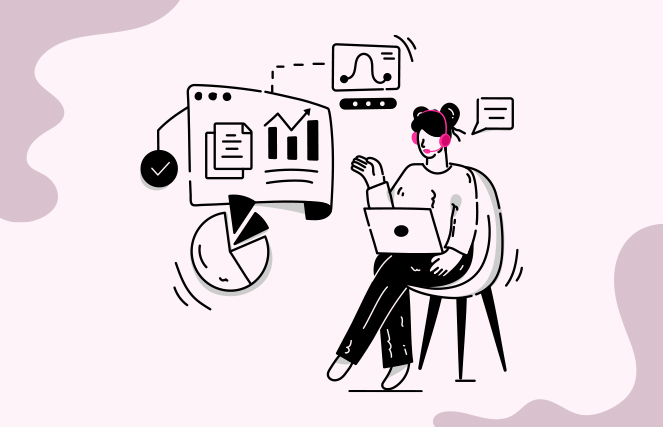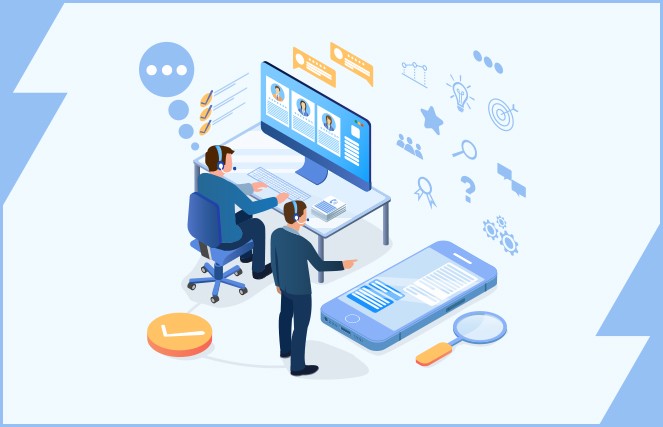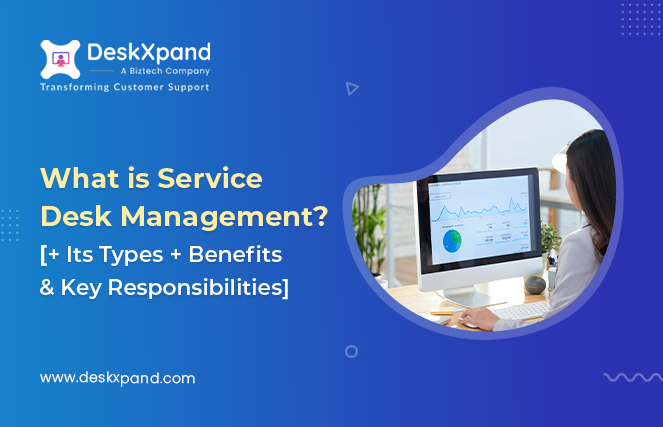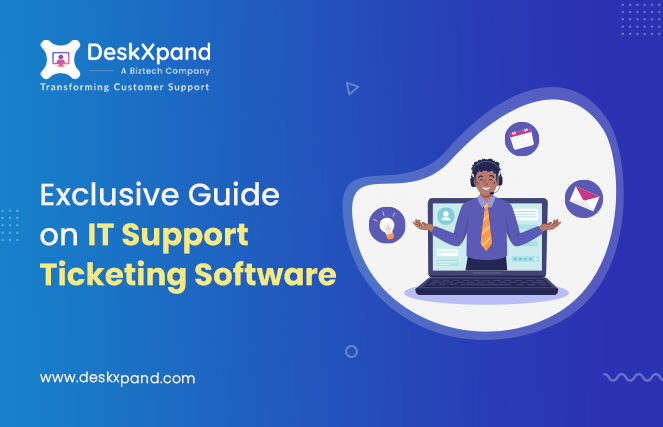A long time ago, in a data set, far, far away lay a piece of information that could have benefited a company and would have saved millions of dollars of support costs. It could have helped the company provide a personalized experience that would’ve retained their customers. It was right there, laying useless on their big screens! Unfortunately, a lack of tools to quantify that piece of information cost the company their doom.
Touching story, isn’t it?
What if I tell you that this story is true for every other company with a customer support department working at the forefront? Yes, that’s true. Most brands don’t even realize how they lost their customers due to minor reasons. Lack of quantifiable data tools keeps them from providing a personalized experience.
At the core of customer support is understanding customers on a personal level. It is about finding out what they want, when they want it, and exactly how they want it? In order to gain that insight, today’s customer support managers need to primarily collect customer data in multiple ways. Besides collecting this data, managers also need to analyze this flood of information to deliver personalized support and achieve their desired results. In a Mckinsey survey, 95% of respondents recognized the need for personalization in customer service. Irrespective of all this:
Personalization is still an art that needs to be perfected.
This is mainly because of the gap between customer data and what these companies do with the data. It is because of the companies’ inability to understand their customers and quantify their needs. They lack the tools, functions, and features that would help them analyze their customers’ needs. Most companies still rely on their agents to figure out strategies based on the data they observe. But,

Humans are great at understanding things conceptually, but they don’t have the ability to look through millions of data points and see patterns.

So what are these tools/features that help organizations prosper without doing much work? What value does these analytics create? How significant are their findings? What are its use cases and advantages? In this blog, we’re addressing all these questions.
I hope you find it insightful. We’ll talk about:
- The Customer-First Approach (Where do Customer Service Analytics Fit)
- How Customer Support Analytics can Improve Business Results
- 8 Analytics That You Must Measure
- Choose a Helpdesk That Inhales Data and Exhales Results
The Customer-First Approach (Where do Customer Service Analytics Fit)
In order to put the customer first, you need:
- Accurate and detailed performance information
- Customer’s demands
- Know-hows of trends and roadblocks in the support
- Know-hows of common queries
- Customer’s personal information
- Every other basic data information pertaining to the customer
Only one thing can help you achieve all this: Real-time Analytics!
The good news is that using basic analytics tools has become a standard practice for customer support teams. This, however, is just a solid first step. Most organizations can still take advantage of this technology. They still can benefit from adopting advanced analytics that would help them achieve ways that truly put the customer first.
Only 37% of organizations feel that advanced customer service analytics create value for them. This reveals a significant missed opportunity. Customer service analytics helps companies generate actionable insights about what will happen next. The end results are:
- Reduced costs
- Increased revenue
- Personalized services
- Higher customer satisfaction scores
How Customer Support Analytics can Improve Business Results
Customer support orchestration (the ability to modify a customer’s experience individually before, after, or during the purchase journey) is becoming very popular with recent data integrations in the support helpdesks. Here are some business benefits of customer service analytics:
1. Pinpointing The Best Direction
An analytics strategy helps you focus on specific customer support challenges and goals. Quantitative analysis can help you spot trends. Data amalgamated with human intelligence can help you decide which trends are the most worthwhile to track and work upon.
For example, one of Sorger’s clients (a tech company) created software for food manufacturers. It was a success, and the manufacturers found the software’s tracking helpful. But Sorger and his team wondered if the software could do more. By tweaking their analytics algorithm, they identified potential markets for breaking trends. They found out a subset of grocery chains that were likely to succeed at selling precut, prepackaged fruits and vegetables—a novelty at the time. Identifying this profitable new market segment for food manufacturers led the company to earn a 20% increase in the revenue for its software sales.
2. Predicting More Successful Strategies
Customer service analytics obviously helps frame successful strategies for your team. It helps you expand to new dimensions, segment customers, and tailor personalized messages.
Eric Segel, the executive editor of The Machine Learning Times, talks about one of their former clients. They were managing 291 sponsor advertisements online, and he helped crunch the data to predict which people were most likely to respond to which advertisement. “Analytics does not guarantee that every customer will respond well. It rather shows the likelihood of success and allows you to decide how to move forward,” he says.
He continues, “It is not a crystal ball where you’re predicting probabilities alone. You can use it at scale in a way the human mind could never do. It’ll benefit you when you apply it over great numbers of individuals.”
Whatever Eric said is on point and accurate. There are no two ways about it.
3. Predicting Higher Conversions
Many customer support teams use analytics to identify high-value customers or a valuable trend that will help them make dollars wisely targeting the right people. Teams can hone strategies even more by predicting which segments they receive the most queries from. They can identify the customers within the high-value group and involve them in their loyalty programs. They can find out which customers will get disenchanted by over-marketing efforts.
Analytics work wonders for customer retention! Only if you know how to use it correctly!
4. Bridging the Data Gap
Last but not least, analytics bridges the data gap between agents and how they provide services. Analytics brings all the data together and eases the agent’s tasks. It improves the collaboration between teams too.

Machines learn from millions of data points and make endless tactical changes. Humans learn from a single data point and make strategic changes.

A single data point can help teams work together by realizing the rising trends and roadblocks and then solving them or benefiting from them. Only the right tools will help you bring your data and strategies together. Try DeskXpand’s customer service analytics features and see how analytics can work in real-time.
Why Do You Need Customer Support Analytics (Use Cases)
Customer-centric companies are increasing their investments in technologies that enable teams to measure and improve customer experience. This will also help them achieve key business outcomes like maximizing customer lifetime value, reducing costs, etc.
Over the past few years, companies have adopted customer service analytics to connect the dots between customer behavior and the KPIs measured by businesses. Leveraging these solutions enables them to aggregate, analyze and act on customer service data to improve customer experiences and achieve desired outcomes. Here are a few more use-cases of customer service analytics and what you should and shouldn’t do with the data:
1. Analyze Customer Feedback & Suggestions
Every business wants to capture customer feedback. But most businesses do not quantify these feedback and suggestions. It is one thing to collect all the data and entirely another thing to use it and act upon it. According to Microsoft Report, 52% of Americans believe that brands do not take action on their feedback.
Hence, you must conduct a thorough analysis to get your customer’s pulse. Transform your raw feedback into meaningful data and lay a further roadmap for your business. Customer feedback will unravel important answers for your support.
2. Discover customer pain points
In times of trouble, customers will go to only one place: i.e., the support department. There is no one other than customer support professionals who understand the pain points of customers.
Behind every unhappy customer is an important pain point that businesses fail to understand. Customer service analytics can help you discover these pain points and find a way to reduce them. For example, if you see a high bounce rate on your knowledge base, it is a clear indication that your content is not helpful enough.
3. Reduced Average Response Time
Reduced response time means reduced agent energy which directly means cost reduction in your support. In a way, every brand wants to achieve this. The most significant benefit of customer service analytics is that it helps you optimize your performances and support strategies. Constant analyzing will lead managers to improvise their strategies time and again. This collectively will bring results and reduce the average response time. Plus, it’s an amazing advantage as it satisfies the customer’s needs to get a quick response too.
4. Measure Employee Performance

To win in the marketplace, you must first win in the workplace.

Everyone should be motivated to perform! Customer service analytics will help you track key performance indicators (KPIs). It’ll also help you to measure performance against the SLAs. For example, you can track the average response time of your agents and see which agents are exceeding expectations and which agents need help.
5. Proactively Enhanced Network Resilience
Organizations underestimate the challenge of network resilience. Managers do not think about the impact of outages on employees and, eventually, customer satisfaction. A typical company faces up to five significant outages each year.
Plus, different outages affect different industry niches in different ways. For example, for a financial-services firm, a two-day outage will require up to a week to return to business as usual. Hence, leaders must proactively model the outcomes of the outages on service levels and build their strategies accordingly.
Every company needs modern customer service analytics features that are intuitive, enhanced with automation, and properly integrated with other business apps. DeskXpand is one such intuitive, automated helpdesk designed to overcome the latest challenges for the customer support industry. Get a personalized demo today!
8 Analytics That You Must Measure
The customer support industry is constantly evolving, and if you want to ace your customer support, you need to master it. Let’s look at this list of top help desk metrics and ensure that your help desk is performing at maximum impact.
1. Average Response Time
Average response time represents the average amount of time it takes your customer support team to settle a case once it is opened.
POV: Your customers lead busy lives, so you need to ensure that your support experience is comfortable and quick. Customers want immediate resolutions.
An increase in your average response time can be due to multiple factors. This may include a lack of suitable tools, poor ticket logging workflow, and so on. Quick resolutions to problems equal happy customers. And happy customers play a crucial role in determining your overall CSAT score.
2. First Contact Resolution
First contact resolution reflects your team’s ability to solve customer problems on the first attempt. When customers do not have to keep contacting your team for the same issue, time and again, customer satisfaction rates are bound to go up.
3. Customer Satisfaction Score

4. Ticket Volume
By tracking the total number of tickets (incoming, processing, or closed) coming into your business and their nature, team leads can make important decisions. Managers can decide the human resources they would need to manage if the ticket volume rises all of a sudden. They can create appropriate work schedules for the agents accordingly.
5. Ticket Volume Via Channel
Measuring just the incoming tickets is not enough. You need to bifurcate them and break them down according to what channels they’re coming from—for example, phone, email, social media, or chat. Once you know which channels are the most popular, you’ll be able to allocate resources to meet customer demand. You can also focus on training agents to efficiently handle tickets on these channels to be more efficient.
6. Net Promoter Score
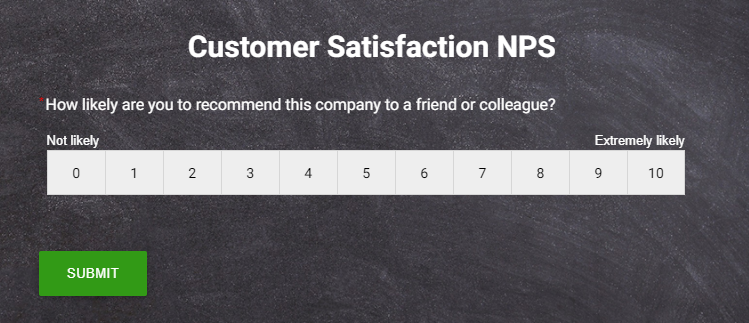
7. Ticket Tracking
Another help desk metric that you should be looking at is ticket trend tracking. The graph of your helpdesk’s open tickets and closed tickets should be parallel. By looking at these metrics every day, you can make sure that your team is keeping up with the demand and that you can identify trends in ticket volume. Other ticket tracking features include:
- Tracking complete lifecycle
- Ticket volumes based on various parameters
- Average first response time
- Analyzing resolved tickets
8. Social Media Monitoring
In the world of social media, every aspect of your social media, including like, post, share, and comment, matters. Your social media strategies can help you offer reliable customer service over leading social media platforms. You can identify the latest trends on your social media channels and revert accordingly.
An ideal helpdesk would let you convert customer messages into tickets automatically and assign them to relevant agents. You can manage customer communication and get notified about relevant customer activities.
Choose a Helpdesk That Inhales Data and Exhales Results
Despite the growth and change in the customer service realm, the golden rule reigns supreme.
Data combined with human efforts will always work!
Most research shows that it is just as important to provide a personalized experience to the customers as it is to fix the problem. Lately, amazing technologies are emerging and changing the dynamics of customer service. These technologies will help brands deliver the best customer experience possible. Finding the balance between efficiency and politeness is the key to customer retention. Creating a seamless and effortless segue between your support data and support strategies will lead to better customer experiences and higher brand loyalty. Plus, all the data you collect will improve your outreach efforts to increase brand awareness and convert more often.
Helpdesk tools integrated with the latest customer service analytics can help you effectively create a better customer experience. DeskXpand is a robust omnichannel customer support software that lets you connect your support data into a single platform. We are ISO27001 certified portal experts with 14+ years of industry experience. We aim to help you achieve complete visibility and attain a high-resolution rate through customer service analytics. Take a free trial today!

